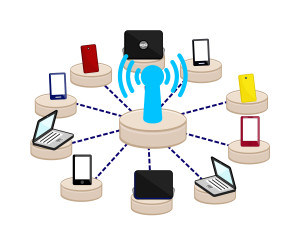 Cyber crimes have recently been carried out in shocking sophistication, sending waves of alarm bells to big enterprises. An enterprise’s communications system is the first vector of attack that criminals can target. Securing B2B unified communications (UC) with a cloud-based UC-as-a-Service (UCaaS) solution is a logical option.
Cyber crimes have recently been carried out in shocking sophistication, sending waves of alarm bells to big enterprises. An enterprise’s communications system is the first vector of attack that criminals can target. Securing B2B unified communications (UC) with a cloud-based UC-as-a-Service (UCaaS) solution is a logical option.
Business benefits of UCaaS
UCaaS has opened new opportunities for businesses by merging internal and external communications. Ideally, all hierarchy levels in an organization should be able to collaborate with one another, and UC has satisfactorily fulfilled this need. However, enterprises also have business communication needs beyond their corporate walls, like 24/7 connectivity to customers, B2B communications, and unimpeded contact with every tier in the supply chain.
UCaaS provides a centralized and unified solution for multiple communications mediums. Instant messaging (IM) and presence, voice and video, mobility needs, and the implementation of authorized traffic are significant trends that are changing the way businesses communicate.
UCaaS increases the availability and efficiency of the IT team. Team members are no longer tied up with the upkeep of hardware, updates on software, testing, and scheduling. Instead, they can be deployed to help core businesses run faster and be more competitive. Business communications under a UCaaS environment also help employees increase productivity wherever they may be – in the office, on the road, abroad, or at home.
With the right design, UCaaS offers solid reliability because data and applications are automatically replicated and backed up in the provider’s multiple data centers. This makes disaster recovery (DR) processes faster and enhances business continuity. Reliability is further boosted by a round-the-clock monitoring of the provider’s data centers and the latest encryption and security protocols.
Role of UC federation in a UCaaS environment
To be more effective, businesses should enable their employees to collaborate in real time with customers, external business partners, and the rest of the supply chain in a secure manner. UC federation makes this possible by cutting down the latencies between the communication sessions of users using different platforms in enterprise or intercompany communication.
UC federation can control which organizations can communicate with each other and at what level they can do so. It also allows specific modes of communications to be deployed or disabled, such as instant messaging or presence.
UC federation can be leveraged by mergers or joint ventures that have different UC technologies. The issue of interoperability during transition would be less of a problem.
There is a growing number of UC platforms and range of specifications from different vendors, such as Microsoft, Cisco, ShoreTel, and Avaya. UC federation aims to offer seamless interoperability between these platforms. NextPlane is one of the pioneers of this service, and AT&T launched its offering in early 2015. In 2010, Hewlett-Packard, Microsoft, Logitech, Polycom, and Juniper Networks formed the Unified Communications Interoperability Forum (UCIF). It later merged with the International Media Telecommunications Consortium (IMTC) in 2014.
As a hosted service, UCaaS is a powerful tool to streamline B2B communications. It also allows businesses to do everything faster: work, communicate, collaborate, and increase profitability.